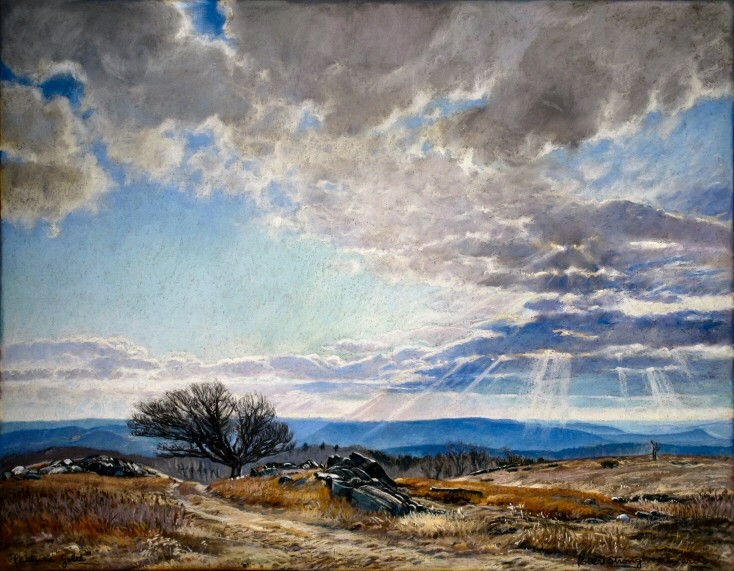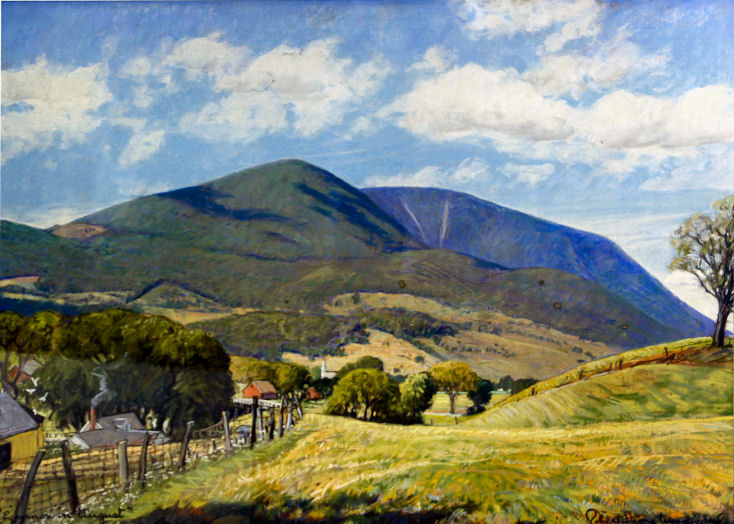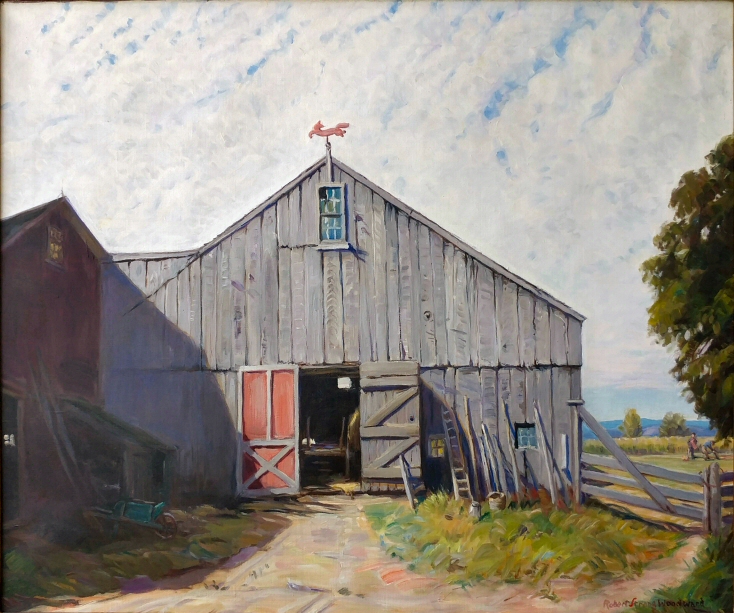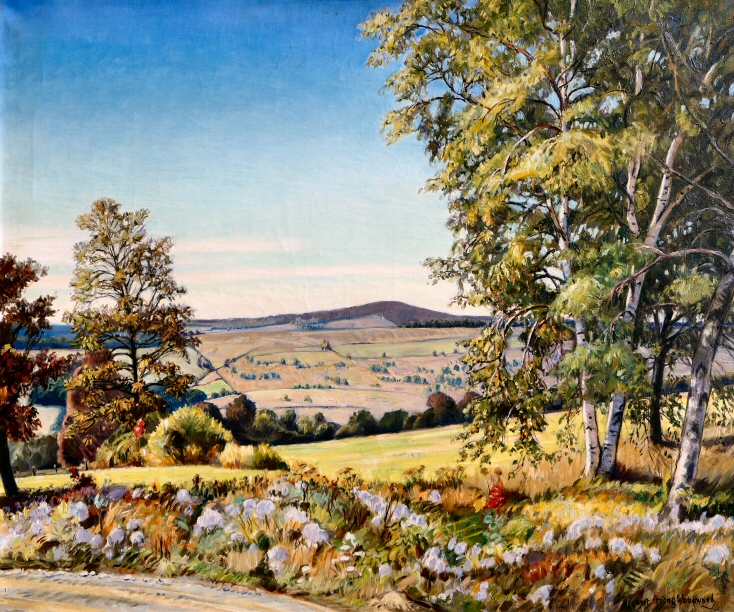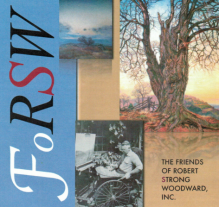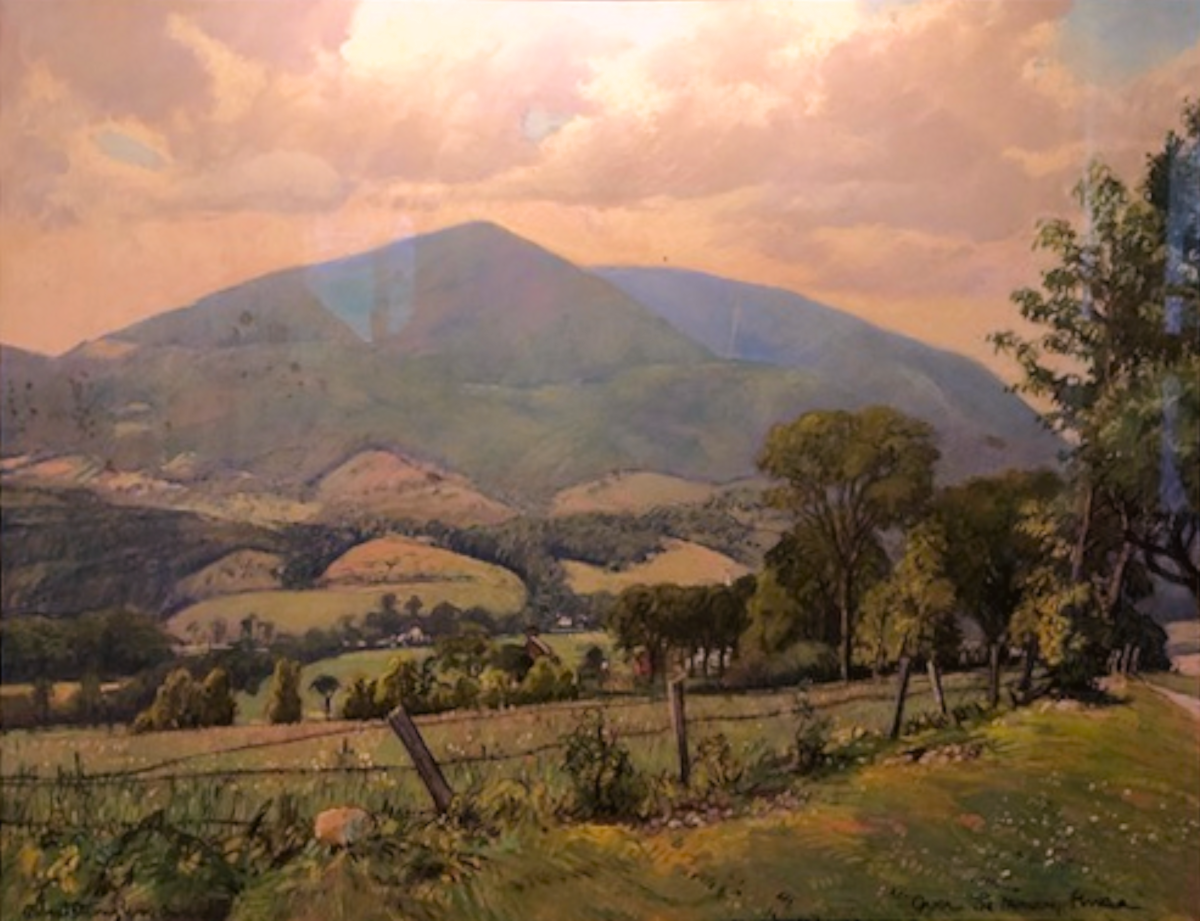Quick Reference
Unknown
Unknown
Pastel on Board
Landscape
Stunning Skies, Mountains
22" x 29"
Salmagundi Club, NYC, 1936
Southern Vermont AA, 1936
Unknown
NA
Featured Artwork: Over the Mowing Fence
RSW's Diary Comments
Editor's Note:
Woodward never kept an official ledger of his remarkable chalk drawings much
to our chagrin. He never gave them equal footing to that of his oil paintings. For Woodward,
it seemed as if he did them for the pure enjoyment of drawing, his first love.
However, as time has passed they are as equally admired and coveted by many for their extraordinary
beauty and skill and in many cases have out-paced in value their sibling oils.
Additional Notes
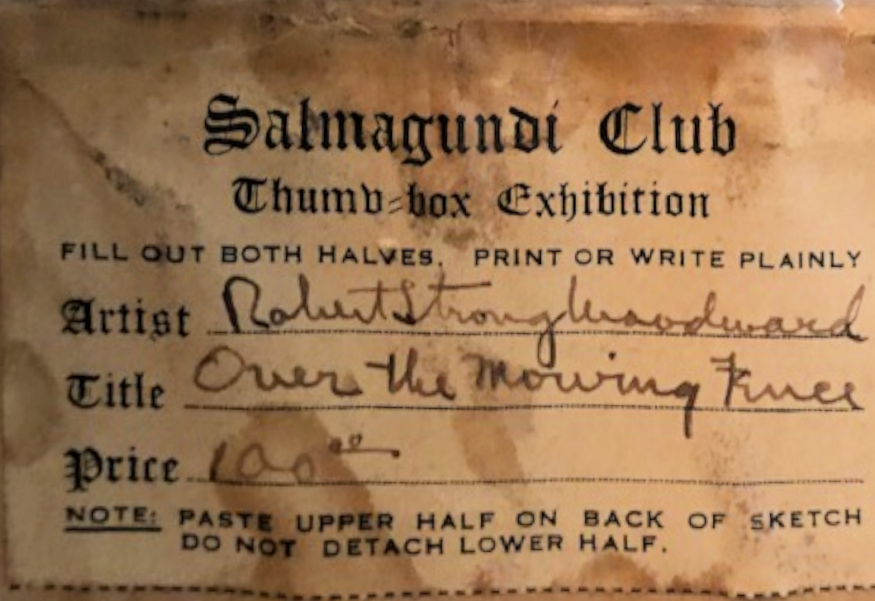
 A label from the back of this chalk
A label from the back of this chalk
for the Salmagundi Club in NYC.
 Here again, we have the best image available at this time for this chalk drawing. As we often point out
they are very difficult to photograph due to the fact that they are protected under glass.
Here again, we have the best image available at this time for this chalk drawing. As we often point out
they are very difficult to photograph due to the fact that they are protected under glass.
 This chalk drawing is special in the fact that Woodward captured a setting westerly sun glowing over the
mountain. We believe the mountain is Mount Equinox in Manchester, VT. Woodward preferred the natural light of the north and southern skies, specifically
between the hours of 10 a.m. and 2 p.m. when the sun was highest in the sky. His main focus was on the ordinary, everyday and most common settings of life.
This drawing is an exception to his typical routine.
This chalk drawing is special in the fact that Woodward captured a setting westerly sun glowing over the
mountain. We believe the mountain is Mount Equinox in Manchester, VT. Woodward preferred the natural light of the north and southern skies, specifically
between the hours of 10 a.m. and 2 p.m. when the sun was highest in the sky. His main focus was on the ordinary, everyday and most common settings of life.
This drawing is an exception to his typical routine.
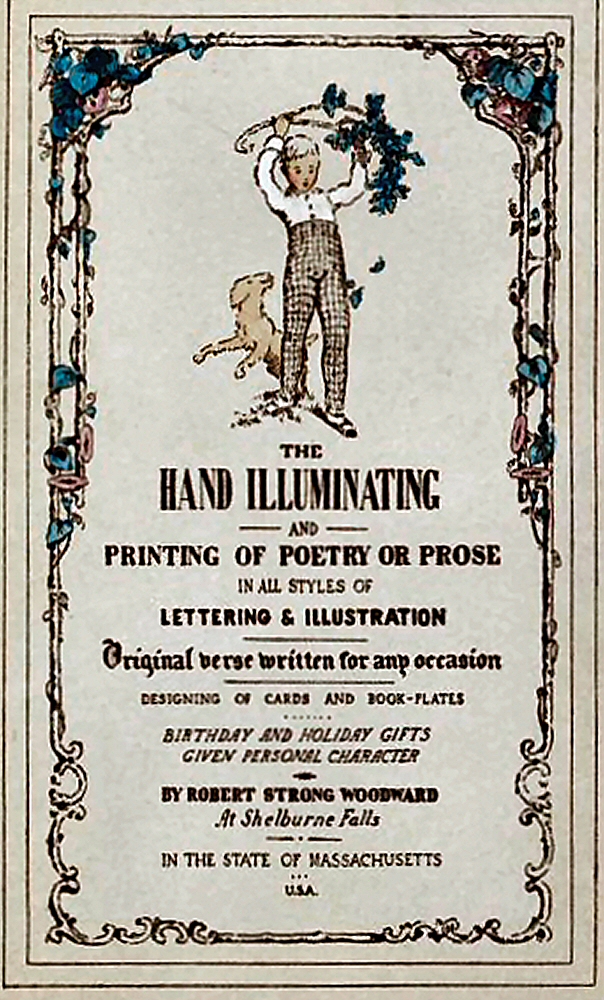
 Woodward's commercial
Woodward's commercial
artist business card
 Long before Woodward was a landscape artist, he was a commercial artist and craftsman. He designed
Bookplates for the book collections of a number of prominant clients, as well as, creating illustrations for books
and cards to be engraved for print. The first formal art association he was a member of was the Salmagundi Club in New York City. The Salmagundi Club's origins
dates back to the early 1870s. It was initially formed as a "sketch class" in Johnathan Scott Hartley's studio in Greenwich Village. While over the years it expanded
to include all types and styles of art, it's heart is really in the drawing design, craftsmanship, and skillset for the burgeoning graphic design industry. Chalk drawings,
or pastels are also correctly referred to as paintings, however, their emphasis is primarily on the drawing skills of the artist which Woodward had a keen passion for
going back to his childhood. His chalk drawings were that connection to the heart of why he became an artist. For more on his chalk drawing see the next section below...
Long before Woodward was a landscape artist, he was a commercial artist and craftsman. He designed
Bookplates for the book collections of a number of prominant clients, as well as, creating illustrations for books
and cards to be engraved for print. The first formal art association he was a member of was the Salmagundi Club in New York City. The Salmagundi Club's origins
dates back to the early 1870s. It was initially formed as a "sketch class" in Johnathan Scott Hartley's studio in Greenwich Village. While over the years it expanded
to include all types and styles of art, it's heart is really in the drawing design, craftsmanship, and skillset for the burgeoning graphic design industry. Chalk drawings,
or pastels are also correctly referred to as paintings, however, their emphasis is primarily on the drawing skills of the artist which Woodward had a keen passion for
going back to his childhood. His chalk drawings were that connection to the heart of why he became an artist. For more on his chalk drawing see the next section below...
 Note the label says, "Thumb=box Exhibition." A thumb box exhibition is one by which, as an exhibited piece is sold,
it is removed from its spot and replaced by another piece of art in a rotating fashion. In this process, more art gets exhibited and hopefully sold in one show. It is still
a tradition to this day.
Visit the Salmagundi Club website [page will open in a new tab].
Note the label says, "Thumb=box Exhibition." A thumb box exhibition is one by which, as an exhibited piece is sold,
it is removed from its spot and replaced by another piece of art in a rotating fashion. In this process, more art gets exhibited and hopefully sold in one show. It is still
a tradition to this day.
Visit the Salmagundi Club website [page will open in a new tab].
More on Woodward's Chalks
The following is an excerpt from, "An Artist of his Time", a lecture, hosted by the Friends of RSW, on RSW by Peter Trippi, editor-in-chief, Fine Art Connoisseur Magazine, which also did a feature article on RSW. CLICK HERE to view the Article
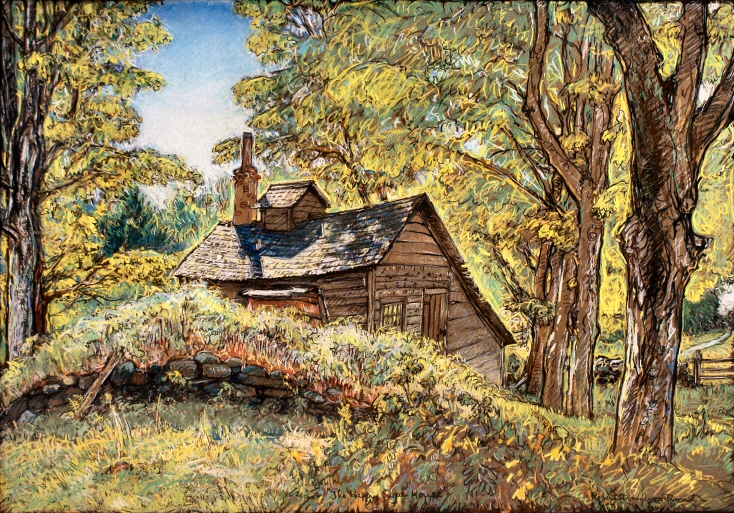
 The Happy Sugar House - Chalk
The Happy Sugar House - Chalk
"...the pastel works - they're just fantastic. And I'm afraid that they photograph very well but you don't really appreciate the difficulty of making them until you see them up close. That as you know with pastel, you have to be very very good to make it work, because it hard to correct a mistake. With oil paint it's much easier to cover over the error. But these are really really spectacular."

